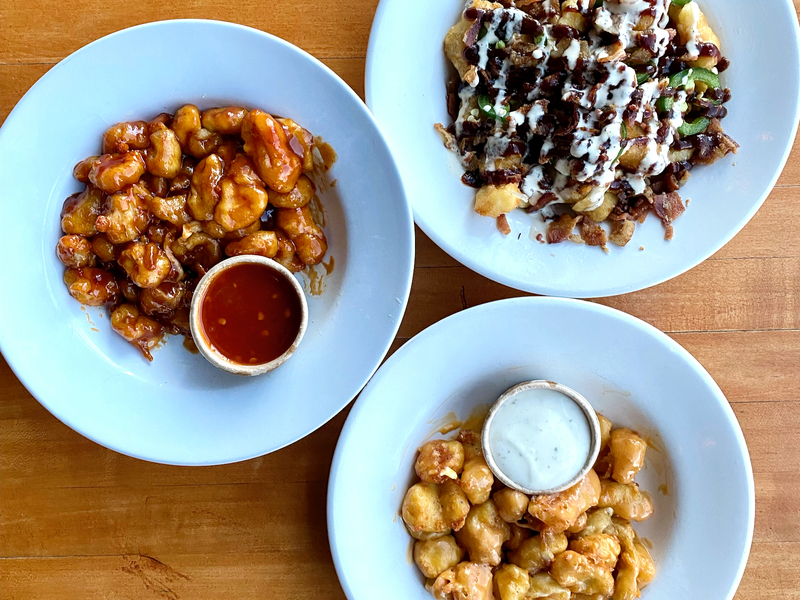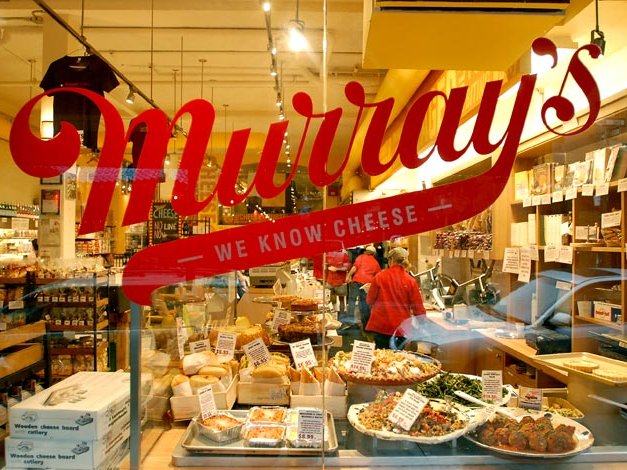For the seventh straight year, October is Dining Month on OnMilwaukee.com, presented by the restaurants of Potawatomi. All month, we're stuffed with restaurant reviews, delectable features, chef profiles and unique articles on everything food, as well as the winners of our "Best of Dining 2013."
Clock Shadow Creamery, the first urban cheese factory in Wisconsin, opened in April 2012 in the "green" Fix Building, 138 W. Bruce St.
The facility is on the ground floor of the Walker's Point building, developed by Juli Kaufmann, which includes a geothermal heating and cooling system, a rooftop garden and rainwater reuse system, a power generating elevator and many other ecological innovations.
The creamery shares the space with Purple Door Ice Cream. Purple Door will move to a new location just a couple of blocks away in early 2014.
Clock Shadow Creamery founder Bob Wills, who grew up in Milwaukee, also owns Cedar Grove Cheese, another small-batch cheese making facility, in Plain, near Spring Green.
The goal of the creamery is to produce fresh cheese while executing eco-friendly practices. It also provides opportunities for people to learn the craft of cheese making through apprenticeships, educates the public on the nutrient value of fresh dairy products and connects local farmers with customers.
"We are a pretty unique entity being a creamery in the city," says Jeff Peterson, retail and outreach manager. "There is a large population of people around us so we can sell our cheeses that are best when consumed immediately and they get a really fresh product."
To further ensure freshness, Clock Shadow produces much of their cheese based on demand, not a set schedule. They do, however, usually made curds twice a week: yellow on Wednesday and white on Friday.
Recently, we went on a tour of the facility.
Clock Shadow Creamery offers public tours Monday-Saturday every half hour from 10:30 a.m. to 4:30 p.m. The cost is $3 for adults and $1.50 for kids. Reservations are required and recommended on Wednesdays and Fridays when they make cheese curds.
The tour primarily takes place in the observation room where a staff member explains the cheese making process, the history of cheese making and other fun factoids like "why are cheese curds squeaky?" and "why is cheddar cheese yellow?" (Sorry, you’re going to have to go on the tour to find out the answers to these questions.)
Recently, Peterson – along with cheesemaker and general manager Ron Henningfeld – gave us the tour.
Henningfeld is a licensed cheese maker who studied as an apprentice at Babcock Hall Dairy Store in Madison. He then took classes at the University of Wisconsin-Madison and UW-River Falls before taking and passing the state exam.
Wisconsin is the only state that requires cheese makers to pass an exam and have a license. (Take that, California!)
Most of Clock Shadow’s cheese is made third shift, so the tours offer people the chance to see other aspects of the cheese making process such as packaging.
"It’s kind of like bakery – you make it in the night and get it out in the morning to the stores so it’s as fresh as possible," says Henningfeld.
Clock Shadow specializes in fresh cheeses – cheeses that are not aged – including curds ("squeaks"), ricotta, quark (a German-style spreadable cheese) and queso blanco.
"Community inclusion is important to us and being in this part of town, Mexican cheeses are something we intend to focus on," says Peterson.
The cheese is available at the creamery’s retail store, as well as at Beans and Barley, The Outpost, Glorioso’s, Grash’s, Metcalfe’s, Woodman’s and more.
During our tour, Peterson explained the cheese-making process. He tailors the amount of information he provides based on the age and interest level of the tour group. We were interested in obtaining as much info as possible, so he articulately and conversationally gave us the low-down.
The first step in cheese making is to pump pasteurized cow’s milk from a holding tank into a vat. Then bacteria cultures are added – which is how cheese is flavored.
"Each type of cheese utilizes a different combination of bacteria," says Peterson.
At this point, the cheese is still very runny, so an enzyme is added to coagulate the liquid. Once coagulated, it is cut into pieces so the pieces can expel the most moisture – which is the whey – and the remaining solids become more dense.
There is more whey than curds at this point, and the whey is drained into a holding tank and later used as fertilizer on farms. It is also sometimes used in protein shakes or fed to livestock.
It can also, believe it or not, be mixed with rock salt and sprinkled on icy roads.
After the information / observation session, tour-goers are invited to sample a variety of different Clock Shadow Creamery cheeses. The creamery has 40 different cheeses in total.
"We make phenomenal cheese. If you’re looking for that fresh, squeaky cheese curd, we have that," says Henningfeld. "Making great cheeses is extremely important to us, but we’re also a business that values creating jobs, employing people from the neighborhood and fitting inside this green building. The cheese is very important but it’s part of a bigger picture."
Molly Snyder started writing and publishing her work at the age 10, when her community newspaper printed her poem, "The Unicorn.” Since then, she's expanded beyond the subject of mythical creatures and written in many different mediums but, nearest and dearest to her heart, thousands of articles for OnMilwaukee.
Molly is a regular contributor to FOX6 News and numerous radio stations as well as the co-host of "Dandelions: A Podcast For Women.” She's received five Milwaukee Press Club Awards, served as the Pfister Narrator and is the Wisconsin State Fair’s Celebrity Cream Puff Eating Champion of 2019.







